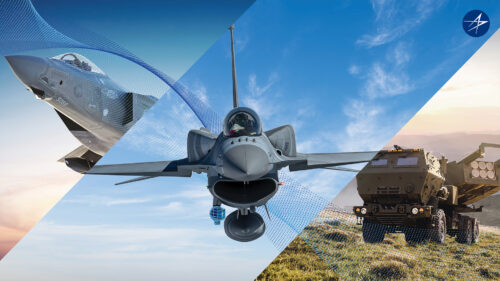Lockheed Martin has unveiled the Sniper Networked Targeting Pod, a revolutionary system designed to significantly improve interoperability between F-35 Lightning II jets, 4th generation fighters, and ground-based artillery systems.

Image: Lockheed Martin
This innovation builds upon the widely used Sniper targeting pod, a mainstay for fighter aircraft. Lockheed Martin engineers have transformed the Sniper pod into an advanced communication and computing node, enabling a combined joint all-domain command and control network.
Two key features address the challenge of seamless data sharing across different generations of aircraft and ground platforms:
- An advanced datalink ensures compatibility with the F-35, facilitating the real-time exchange of critical target and surveillance information between aircraft.
- A Mobile Ad-hoc Network (MANET) radio establishes a secure, decentralized mesh network between various air, ground, and sea platforms. This network allows for the sharing and utilization of critical data in support of coordinated operations.
The rapid development of the Sniper Networked Targeting Pod directly addresses the needs of NATO defense forces. It fosters closer collaboration between F-35s and existing fleets of 4th generation fighters, many of which are expected to remain operational for decades to come. Additionally, the system fulfills a critical need for continuous target-tracking data from airborne sensors to enhance the effectiveness of ground-based precision fires.
“The Sniper Networked Targeting Pod connects the battlespace, enabling seamless data sharing across platforms and systems,” said Stacy Kubicek, Lockheed Martin’s Vice President of Sensors & Global Sustainment. “This capability is in high demand by U.S. and allied forces and represents a powerful force multiplier for joint operations.”
The F-35’s advanced sensors can be leveraged as forward observers, identifying and tracking targets. The Sniper pod then facilitates the sharing of precise coordinates with F-16s and ground-based command and control systems, enabling the deployment of munitions like those from the HIMARS and MLRS family.
“The F-35 is the aircraft of choice for NATO allies,” said J.R. McDonald, Lockheed Martin’s F-35 Business Development vice president. “The enhanced capabilities of the Sniper targeting pod will further strengthen the F-35’s role in fostering connectivity and interoperability for current and future partners.”
Lockheed Martin has a proven track record of interoperability through ongoing tests and demonstrations. The company plans further complex flight testing and live missile shots in collaboration with the U.S. military. The development process has been accelerated by leveraging digital technologies, such as simulated missile shots based on real-world targeting system inputs.
The Sniper pod was chosen for its suitability as an interoperability upgrade between generations of jets for two reasons. Upgrading an external pod with a compatible datalink offers greater flexibility compared to modifying the aircraft itself. Additionally, the Sniper pod is a widely integrated and trusted system among air forces around the world.
The Sniper Networked Targeting Pod’s capabilities extend beyond integrating F-35s, F-16s, and ground launchers. The system has the potential to enhance other Lockheed Martin platforms, including the UK’s SkyKeeper air defense system and the new low-observable hypersonic missile, Mako.
For more information, hit the Source below